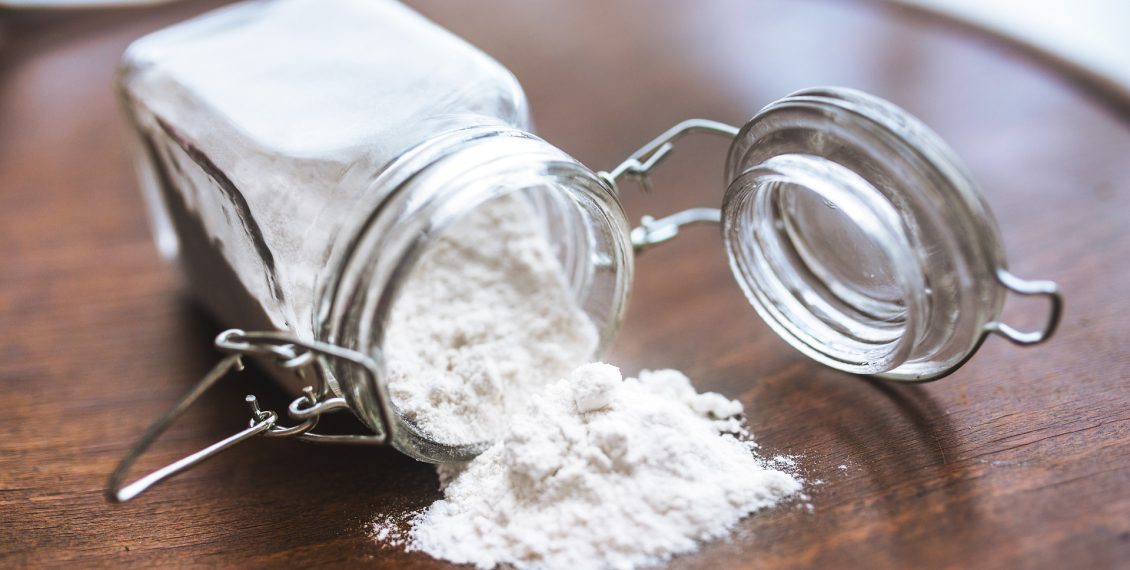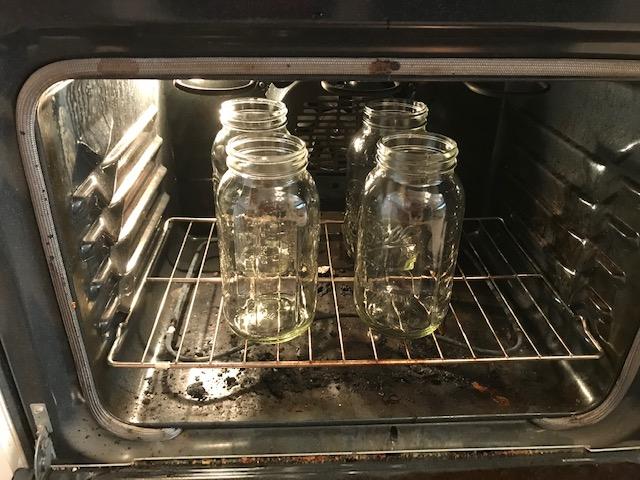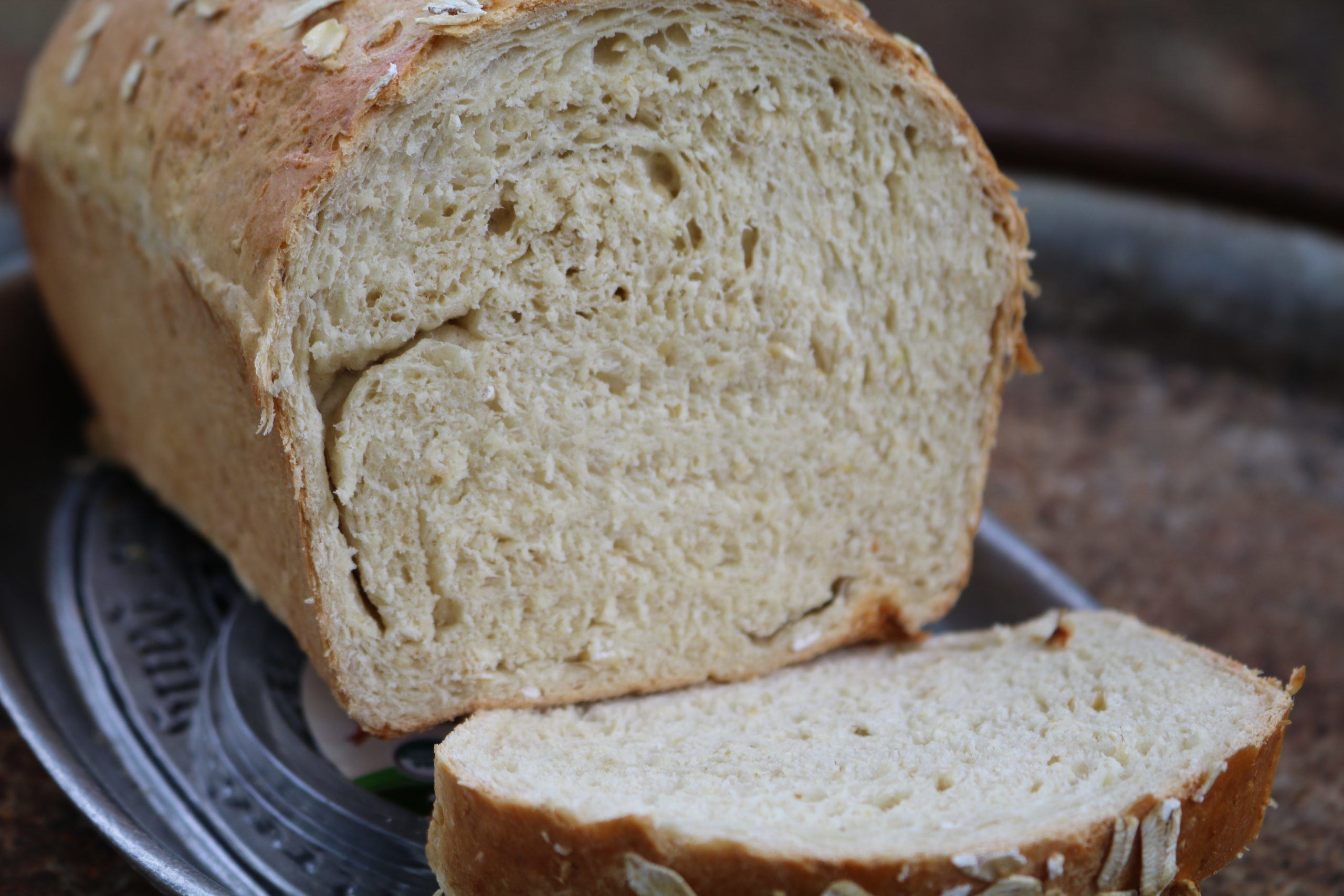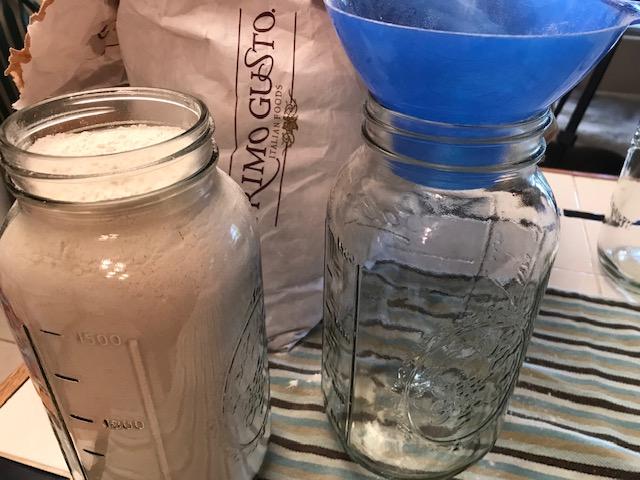
As an Amazon Associate, I may earn commissions from qualifying purchases from Amazon.com
Dry Canning Flour
Dry canning flour has been around since my grandmother’s time. I read up on canning flour when I got a 50-pound bag. At the time, flour was hard to come by due to a shortage, and I needed to bake bread for our family because it was not available in our grocery stores. The bread was off the store’s shelves, and baking ingredients were unavailable. I found flour in a restaurant supply store, but 50 pounds seemed like a lot to deal with!
Can you do canning in the oven?
I packaged the flour in many ziplock bags for the freezer. I knew I needed to find another way to store the rest of the flour that didn’t take up my freezer space. Canning flour came up in a conversation, so I began researching. If you try this independently, I suggest doing your own research to see if it is right for you. According to the USDA, oven-canning flour is not a safe method. I oven-canned flour to save a large amount during a time of need. As you will see, other methods may be safer and more effective.
What temperature should oven be for canning?
I used four half-gallon canning jars with the lid and rings. Wash the jars and ensure they are completely dry before putting the flour in them. Drying them in the oven will dry them if you are short on time.

Watch the video for the complete tutorial on how canning flour works.
Oven-canning flour is just one solution for storing dry goods. Cornmeal, beans, and rice are other food items that can be dry-canned for long-term storage. Other solutions work well for storing food items for storage too. Find what works for your needs. I am trying several different ways to put dry goods up for storage.

How long will dry canning flour last?
In reading the information, I believe it will last about a year. Flour can last longer depending on your climate and humidity. Storing food in a cool, dry place will always help it to last longer than its printed shelf life. Always inspect your flour for bugs or an off smell when using stored flour.
How long do you dry can flour in the oven?
In the video, I left the flour in the oven for about an hour at 200 degrees. I used half-gallon jars and followed a recipe for that size. Always take into account your storage size and the directions.
see also – Honey wheat bread
How do you preserve flour in mason jars?
Storing flour in a glass jar with a tight-fitting lid is better than paper packaging if it is in a storage pantry. Oxygen absorbers can be used inside the jar to help with moisture, especially if you live in a humid climate. A vacuum sealer is another option with jar attachments. I use this method for food storage of many items.
What is the best way to store flour?
Many people have a personal preference for the best way to store flour. Freezing flour is a good option if you have the space. Next, using food-grade buckets is another way to store flour safely. A combination of ziptop bags, food-grade buckets, and oxygen absorbers is another good way to store flour.
I store many foods such as beans, rice, flour, and pasta. The 4-4-4 method is what I start with, no matter how I store the items. First, freeze the item for four days. Then, leave it on the counter for four days and freeze it again for four days. After this process, you are ready to store the food for the long term.
The first four-day freeze will kill any larvae and bugs, but not the eggs. The second four days on the counter will allow time for any eggs to hatch. The next freeze will kill the second round of larvae, and then you are good to store the food item.
Solutions
Canning flour in the oven was a good solution for me then. The flour I purchased was not ideal for my everyday needs but it will be nice for emergencies. Knowing I have those jars stored will come in handy someday.
The USDA does not recommend dry heat canning because foodborne bacteria and their spores are not sensitive to it. Wet heat kills bacteria and spores, including water bath canning and pressure canning.
Even though I needed a quick solution for the flour, this allowed me to begin researching and storing food long-term. I have stored food in the past but had gotten out of the habit. Having food stored for your family is just good practice for emergencies. We live in Florida and often have periods without power due to hurricanes.
See our planners and courses available
Knowing what foods store best is a good resource for stocking your pantry. Keeping extra of those items will come in handy. Remember to rotate stored food about every six months. It is best to rotate if you store canned goods, so food does not go bad.